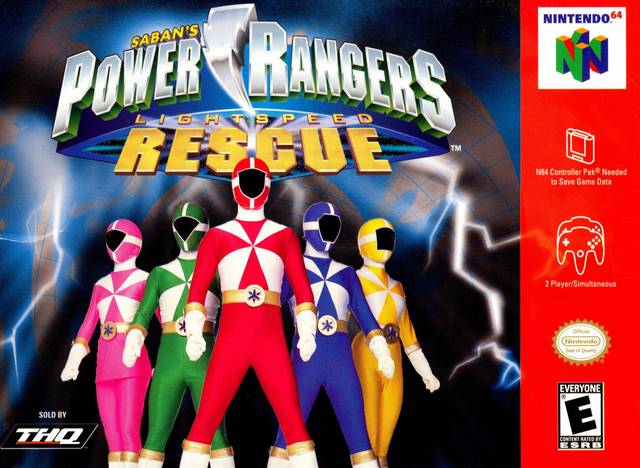
|
| Developer: Mass Media |
| Publisher: THQ |
| Released: September 28 2000 |
| Regions: NA, PAL |
| Genre: Action/Adenture |
| Multiplayer: 1-2 players |
| Cart Size: 12MB / 96Mbits |
| Saving: Controller Pak |
| Rumble Pak?: No |
| Expansion Pak? No |
| - Required? No |

|

|
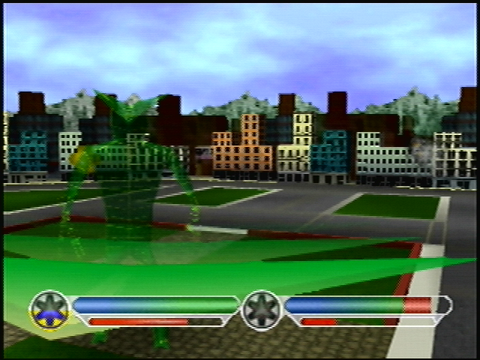
|
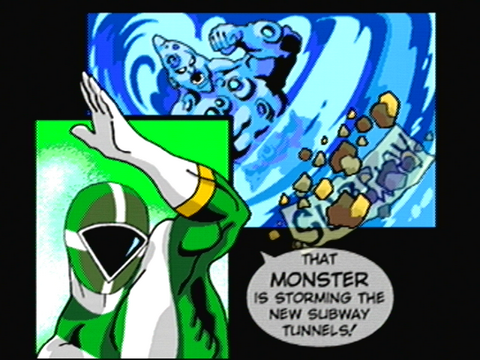
|
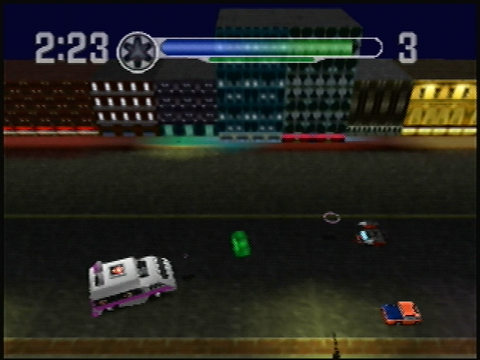
|
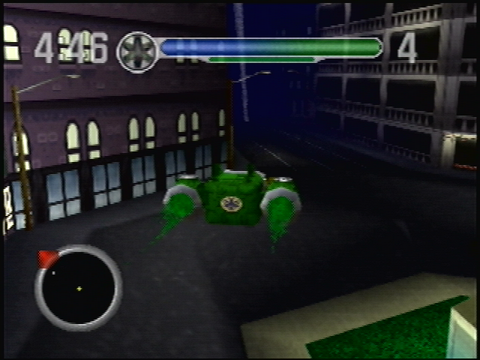
|
These Rangers are powered by pixies... sad but true.
One of several video games based on the 2000 incarnation of the long-running Power Rangers franchise, Power Rangers Lightspeed Rescue featured five individuals being drafted by a naval base to become Power Rangers and defend the city of Mariner Bay from a group of demons who wish to take over the city so that they could rebuild their temple... or something. Interestingly enough, Lightspeed Rescue is the first incarnation since Power Rangers Zeo to get video games for the various home consoles; in this case, the GBC, the Sony Playstation, and today's target, the Nintendo 64.
Now each system received its own little video game to give console players their own piece of the Ranger pie. The GBC version was a platformer with various rescue missions and zord fights. The Playstation version was a third-person brawler with Zord fights. Then there’s the Nintendo 64 version, which comprises four different play styles in an attempt to add some variety to the gameplay, but unfortunately none of these are done right.
When you start up the game, you're greeted with the instrumental version of the Lightspeed Rescue theme song and it sounds pretty good off the N64. Hey, it's cool to see a video game play the show's theme song, much less get it down pat. At least, that's your general thinking when you start the game. The theme song can also be heard during the main menu, the comic-style cutscenes, and the end credits. By the end of the game, it starts to get on your nerves. Different music would have been greatly appreciated during these intermissions.
Now thankfully, the theme doesn't play during actual gameplay, but instead you're greeted with a mixtape of generic, uninteresting, boring in-game music that drones constantly forever, shifting tones seemingly at random. This looping montage of mediocrity is the only tune you'll be listening to in every single level of this game, whether it'd be Ranger levels, Zord levels, whatever. It's the only in-game song throughout the entire game. That's TWO tracks, TOTAL in this entire game. That's it. Two music tracks. There is some voice-over work; some of the cast of PRLR contributed minor voicebytes to the game, but these are just generic soundbytes that the game could have done without. Sound effects are there, nothing worthy to say about them.
The cutscenes are also horrific. You have these poorly-drawn comic-like renderings of the Rangers and some of the supporting cast who barely look like the people they're supposed to represent. The Zord transformations sequences are depicted in a Powerpoint presentation that puts low-quality Flash animations to shame. It's disheartening when the 16-bit Sega Genesis system can pull off a Zord transformation sequence better than a video game console with four times the bits.
With regards to the in-game graphics, PRLR boasts rather bland visuals. The rendering is alright with no real rough edges, but at times the textures are either extremely low-resolution or are non-existent. It's not a visually impressive game either. It almost looks someone took an ancient Atari Jaguar video game, reskinned everything to make it more Power Ranger-y, dropped it onto a black N64 cartridge, and VOILA! Brand new game! And this thing was released in 2000. N64 was out for awhile and that system had a number of quality titles that looked better than this. The camera isn't really much of a bother in this case, but that's not really saying much.
Even with the low-quality graphics and sound, what eventually makes or breaks a game is its gameplay. Unfortunately, PRLR's gameplay is a colossal fail on so many levels that it isn't even funny. As previously stated, Lightspeed Rescue comprises four different play styles; the Ranger levels, the driving levels, the flying levels, and the Megazord levels. None of these are executed properly or in a way that makes them any fun.
Let's start with the Ranger-levels; you guide your Ranger (you can't pick your Ranger, good call there THQ.) in an open area, fighting the various flavors of Batlings alongside the occasional boss monsters, who were created for this game. Each Ranger has the ability to shoot magical pixie shots. No, really. They shoot pixie shots out of their hands and feet. Funny, I thought they had sidearms and other weapons to shoot from. Not to mention that Power Rangers usually just punch, kick, possess weapons of mass destruction, and giant mechanical robots of death. None of that is on display here, except for the robots, but that's another can of worms we'll dwell into later.
Sometimes, you'll have an additional objective that you have to complete in order to clear the level. This could be rescuing stranded citizens, destroying logs, rescuing other Rangers, or just reaching a goal point. It's a pretty straightforward affair where you can use your radar to find the next goalpoint. Nothing too complicated.
Controls are simple - VERY simple. You can move your Ranger around with either the D-Pad or the Analog Stick - there's no real advantage one has over the other, it's pretty much the same thing in this regard. This is a plus for me since I personally prefer using the D-Pad over the Analog stick. The A button fires a pixie shot forward, and the B button fires a pixie shot backwards. You cannot jump in this game, you cannot crouch in this game, and you cannot dodge or sidestep or perform any other actions but running and shooting magic pixie dust ahead or behind you. Considering the subject matter as well as the amount of buttons on a Nintendo 64 controller which would have made these very vital functions possible, this is inexcusable.
There seems to be only a handful of levels in this game where you're roaming around with your Ranger and these maps are recycled every so often, with only the number of citizens to rescue and grunt placement changing between levels. Aside from the city with wide-open areas, you also fight in a subway, a cavern, and ancient ruins that are supposed to be underwater... it's hard to tell.
The levels themselves are sparsely populated, your Ranger runs too slowly, they tend to have problems climbing up a slope of any kind, and there's very little in terms of variation. You just follow the red arrow on your radar to reach your next target, killing Batlings and bosses. There are only three or four bosses in the game and they all fight the same way; basically lulling around a bit while shooting a projectile every so often. It's an extremely basic formula that is repeated over and over. The only difficulty is the increased number of targets because that drags the game out a little more. It's not amazing.
The driving levels are where you either have to put out random fires with your cannon or run over radioactive spills to clean them up. These levels are pretty boring on the whole. You can slow down and shoot, that's it. I suppose there's not much else you can do here. Controls are poor - it's a struggle just to accurately steer your vehicle. You'll end up bumping into other cars, watching as they bounce off the buildings like a pinball. How realistic. Then again, we're talking about a franchise where it's possible to breathe on the moon... I mean, forget it. Let's move on.
The Megazord battles are basically a poor man's first-person shooter where you simply lodge missiles at your opponent. You have a defensive shield to block attacks and you have power-ups to improve your chances. Your opponent can also acquire these power ups which add some degree of challenge if your opponent grabs one too many health pickups. In the long run, this basically amounts to a big pile of nothing. You move around, you shoot missiles, if you get in close, you can punch the bastard though this doesn't last long. It’s just not all that fun and chances are the fights will be over rather quickly, which is the sad thing because you'd figure a battle between giant robots would be hard to screw up.
Probably the only exciting mode in this game are the Jet levels, where you're flying around Green Ranger's zord and have to go around the city collecting crates or in one case, other Rangers, within a specified time limit. This is actually the best part of the game because you get to fly around in the city and just plain ol' explore. Despite the time limit, you can futz around in the city and still have plenty of time to complete your objective. While the controls aren't amazing in the least bit, they used more than the two face buttons which is amazing considering everything else I've played here. These levels are sparsely populated and even though it's better than the other levels, it's not saying a whole lot because even this gets boring after a while. On top of that, there's only a couple of these in the entire game and the map layout doesn't change between levels.
If you're bored of the main Titanium Quest mode, whose plot revolves around defending the domed Titan city from Diabolico (one of the main baddies from the TV show, who you never fight in this game), the acquisition of Titanium Power Coins (I don't remember that from the TV show), and a glorified Titanium Ranger cameo here and there, there's always the secondary Megazord Battle mode, which is just the FPS-style Zord fights. This is also the only mode where you can play with a second player, but good luck trying to convince anyone to play this game with you.
Although the game allows you to alter the difficulty setting and although you can save your progress, the game is still on the easy side. How easy, you ask? Let's put it this way; on my first playthrough I was able to complete the entire game in a couple hours time without dying once. Even when your life is quickly being picked away by the Batlings and projectiles lodged your way, there is never a moment where you're even remotely threatened to lose because you'll come across either a health pick-up or time pick-up or extra power-up. The only time where the game is even remotely difficult is during the zord fights and that's only if you let your opponent pick up the constantly spawning power-ups to use against you. In fact if you're lucky, you can unleash all your firepower at the boss and clear the level in a matter of seconds! That easy.
In conclusion, PRLR for the Nintendo 64 isn't necessarily the worst game in gaming history nor the most astronomically horrid pieces of code ever conceived. It's just a boringly bad video game. While I liked the attempt to diversify the gameplay here with the various modes, I simply don't like the execution; the end result being overly simplistic gameplay that is just too damn dull to play for extended periods of time unless you really have nothing better to do with your time. The overall presentation is also lacking, with only a couple music tracks, lackluster graphics, and these god awful cartoons that make babies cry. Power Rangers Lightspeed Rescue, with sparsely-populated levels, terrible cutscenes, and boring gameplay, is not worth the money and aggravation of tracking down.
Presentation: 3.0
Unintresting plotline involving Titanium power coins. Story told in rather horrible comic-like cutscene.
Graphics: 2.0
Graphics are visually unappealing with their low-resolution textures and ugly comic art.
Sound: 2.0
It has a nice theme song sample, but the dull music, sound effects, and voiceovers are lackluster.
Gameplay: 1.0
Uninspired and boring gameplay overall, no redeeming quality to it.
Lasting Appeal: 1.0
This one can be finished in under a couple hours at most. One playthrough is more than enough.
Overall: 1.8
Written by Dave Maciel
May 18 2013
|